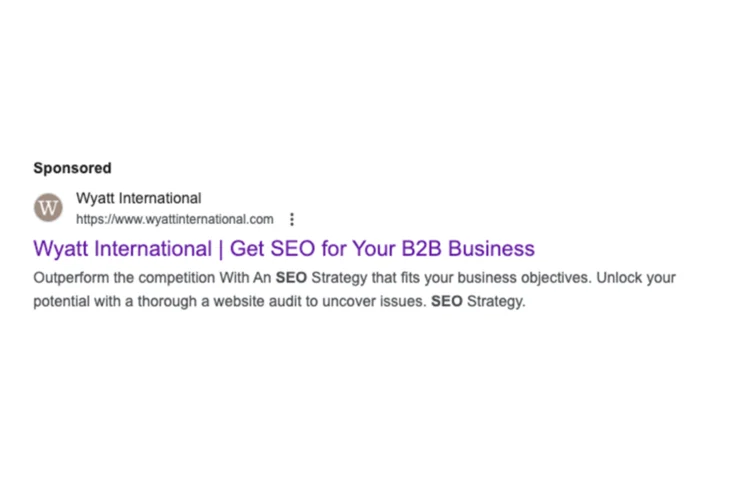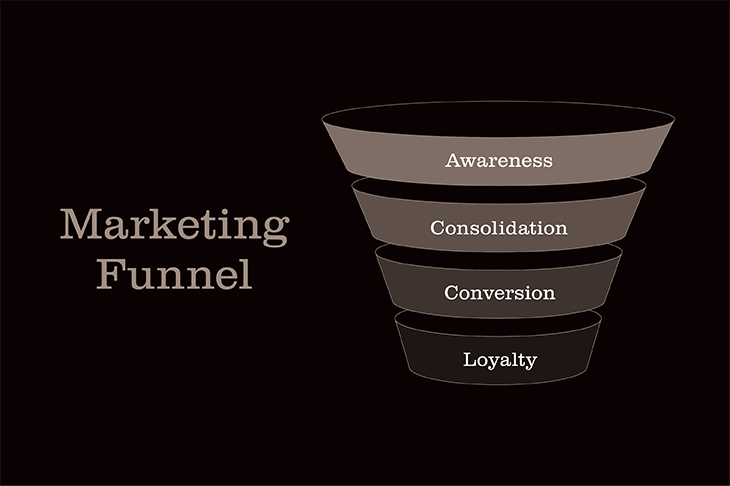- Digital Marketing
- Marketing
How do PPC and SEO work together to achieve better results?
As Wyatt International’s Search Executive, Joe Marsh gets asked this question – a lot. Once again, Joe has graced our blog to provide more insight into how the two digital marketing techniques can work simultaneously – and why they should.

What is SEO and PPC?
Let’s kick off with a few definitions. SEO, or Search Engine Optimisation, is about optimising your brand’s website to improve search engine visibility. PPC, or Pay-Per-Click, is a form of digital advertising that places your brand on page one of the search engine; for each click, brands accrue a cost.
So, let’s face it—we’re just going to focus on one search engine here—I know there are many, but we’re all vying for Google’s attention. When I’m creating a digital marketing strategy for one of our clients, I will always suggest that B2B SEO and PPC go hand-in-hand. More often than not, I find that brands prioritise one over the other, but to improve your brand’s visibility and drive traffic, it’s best if we marry the two disciplines.
The ways PPC and SEO work together.
SEO is a long-term strategy seeking to generate exposure, organic traffic and lead generation. I do understand why there are still some SEO-sceptics out there, results just take time unfortunately. Any SEO-er will tell you this! Whereas with PPC, if you’ve got the wording and creatives right, you can see immediate results as you’re in control of everything from the off. Whether that’s the budget, target audience, times of day, locations or even devices, you can reach your customer at just the right time.
By integrating SEO and PPC, you’ll be able to execute a complementary digital marketing campaign that will provide invaluable synergy. Insights from PPC campaigns can inform SEO strategy development and vice versa—this feedback loop will elevate brand presence in the eyes of Google, your customers, and the wider industry.

Dominate the SERP.
To dominate the SERP simply means to dominate the first page of Google. You’re at the top of the top of the mountain if you’re able to do this. By appearing in both paid ads and organic results, you can guarantee more real estate across results pages and are more likely to encourage clickthroughs to your website or other chosen content. A dual presence is essential to boosting credibility and trust, as users are far more likely to click on your brand messages if you’re ensured a consistent presence.
Let’s think about it from a personal consumer perspective for a moment. How often have we considered purchasing something but are a tad unsure? We always tend to click on the top five searches in Google – but perhaps we close the browser – we’re just not ready yet. But then later on, when we see an advertisement pop up nudging us to shop the virtual window… we’re buying it. We all do it! It’s this that B2B brands need to master, being present at all times.

Target users at multiple stages of the marketing funnel.
I’ve given a loose, hypothetical scenario around online purchases. But what I’m getting at is that B2B brands must have a digital strategy in place that targets users at the various stages of the marketing funnel—and, therefore, the buying cycle.
SEO is effective in capturing your customers and prospects at the top of the marketing funnel. This is where they’re searching for information and digging around to see what’s out there. As a brand, your role here is to ensure you’re producing relevant, engaging and informative content so that your customers can start to build a relationship – or evolve a current one – with your business.
PPC kicks in when it’s time to activate precise targeting ads or remarketing content; naturally, this will be further along our funnel. In aligning SEO and PPC campaigns, you’re able to guide people through the journey from awareness and attraction to consideration and investigation and on to conversion.

Well-optimised landing pages improve PPC scores.
And this is all great stuff, being present and all. But users must be directed to a website that is intuitive, easy to navigate and frankly, simple. An optimised landing page must reflect the messages you’re publishing as part of your PPC campaign, as well as your wider content marketing and PR campaigns. Does your content provide the right information, and is there enough? An enhanced user experience will improve your quality scores, which will result in lower costs-per-click and ad positioning.
Improved user experience and brand awareness.
As with any B2B marketing strategy, the customer is always at the heart of every decision. With SEO and PPC, it’s important not to get bogged down in the ‘techy bits’ and focus on creating high-quality content that loads quickly, particularly on mobile. These three elements will guarantee a better user experience. If this is aligned with high-quality ads and brand recognition, the recall will dramatically increase, and bounce rates will decline.
How to make sure your SEO and PPC efforts are working in harmony.
There are three sure-fire ways to ensure your SEO and PPC work together…
1. Cohesive keyword research and strategies.
Keywords play an integral role in both SEO and PPC campaigns, as effective and comprehensive research will lay the foundations of an entire digital marketing strategy. A great keyword research strategy will analyse various factors, including search terms, the volume of said terms or phrases and who the competition is. These findings will streamline the direction of both SEO and PPC and fuel the creation of keyword-relevant content.
2. Use paid ads to target your key pages.
If you’ve recently updated or created new pages on your website – whether that’s product-related, a case study or blog content – a specific PPC campaign will help exposure. In this scenario, you can’t wait for SEO to kick in per se – PPC will be an effective way to analyse how users interact with the page to evolve the content and optimise the page.
3. Create a consistent brand experience.
I think the crux of all this is that B2B brands must provide a consistent brand experience for customers and prospects. SEO and PPC are two crucial pieces in the B2B marketing puzzle that will reinforce brand identity, provide a seamless and cohesive experience, and contribute to higher conversions.
There you have it! I’d love to hear from you if you’d like to know more about how SEO and PPC strategies can elevate your brand and drive conversions. Send me a DM on LinkedIn.